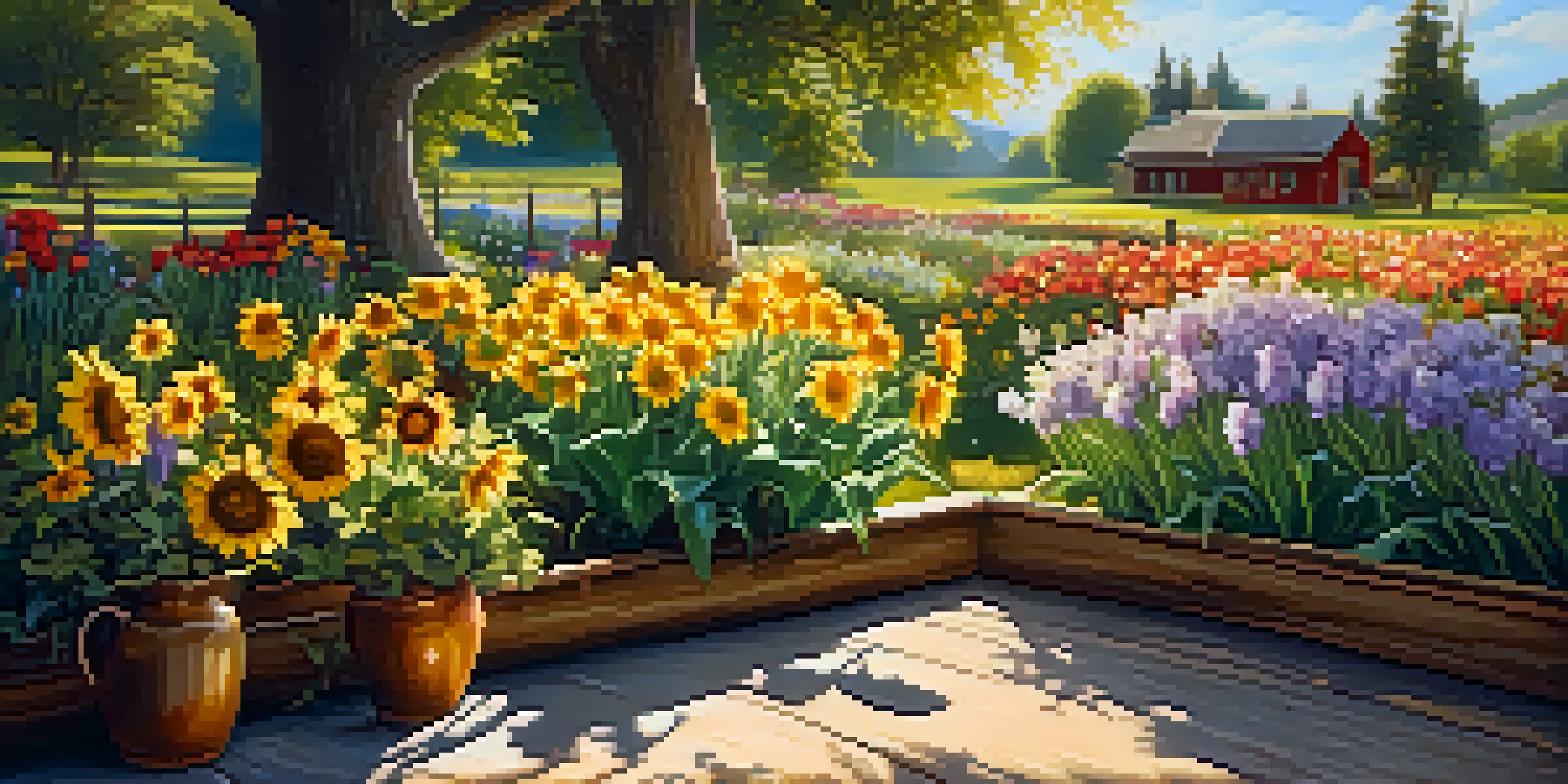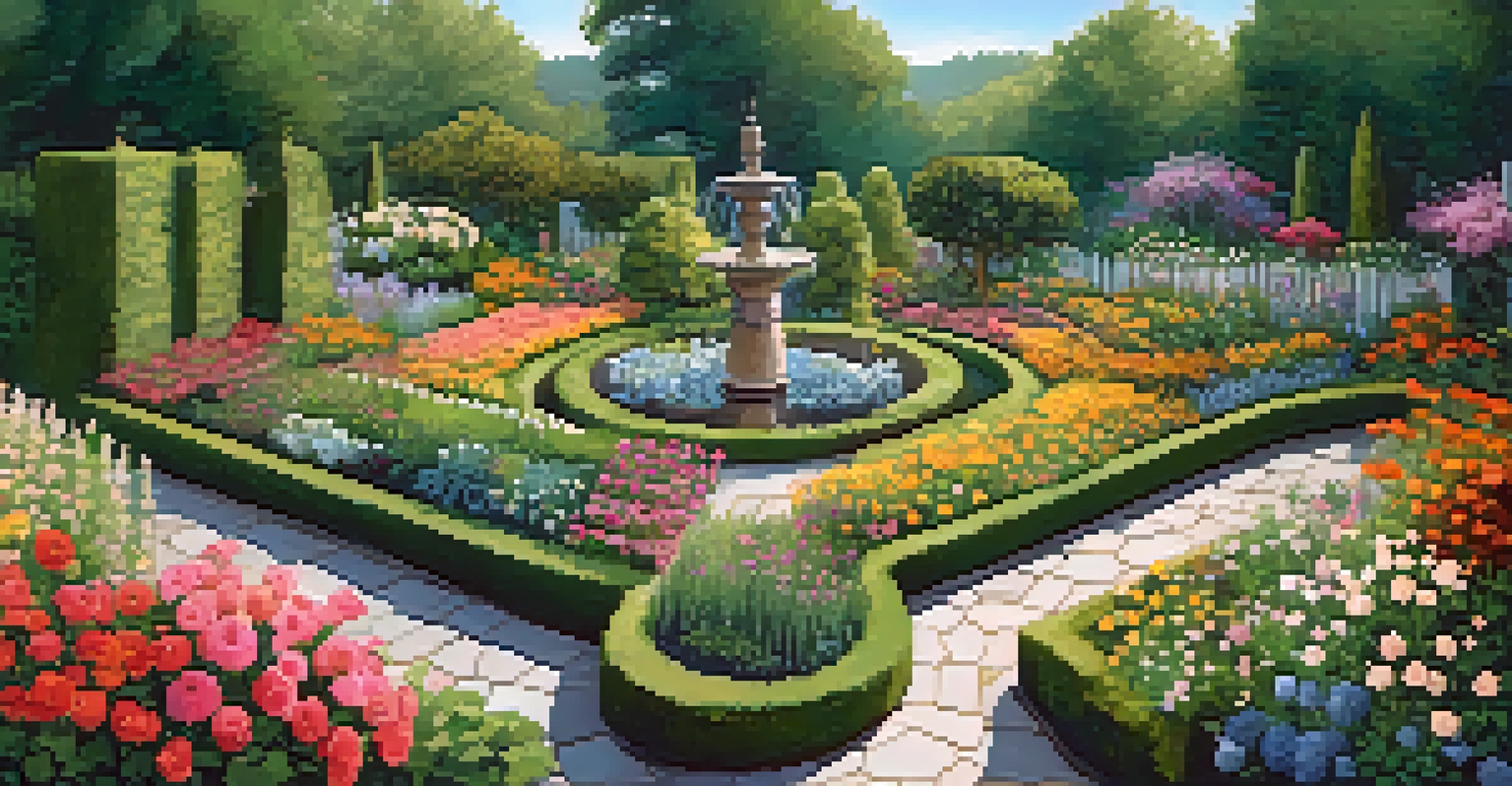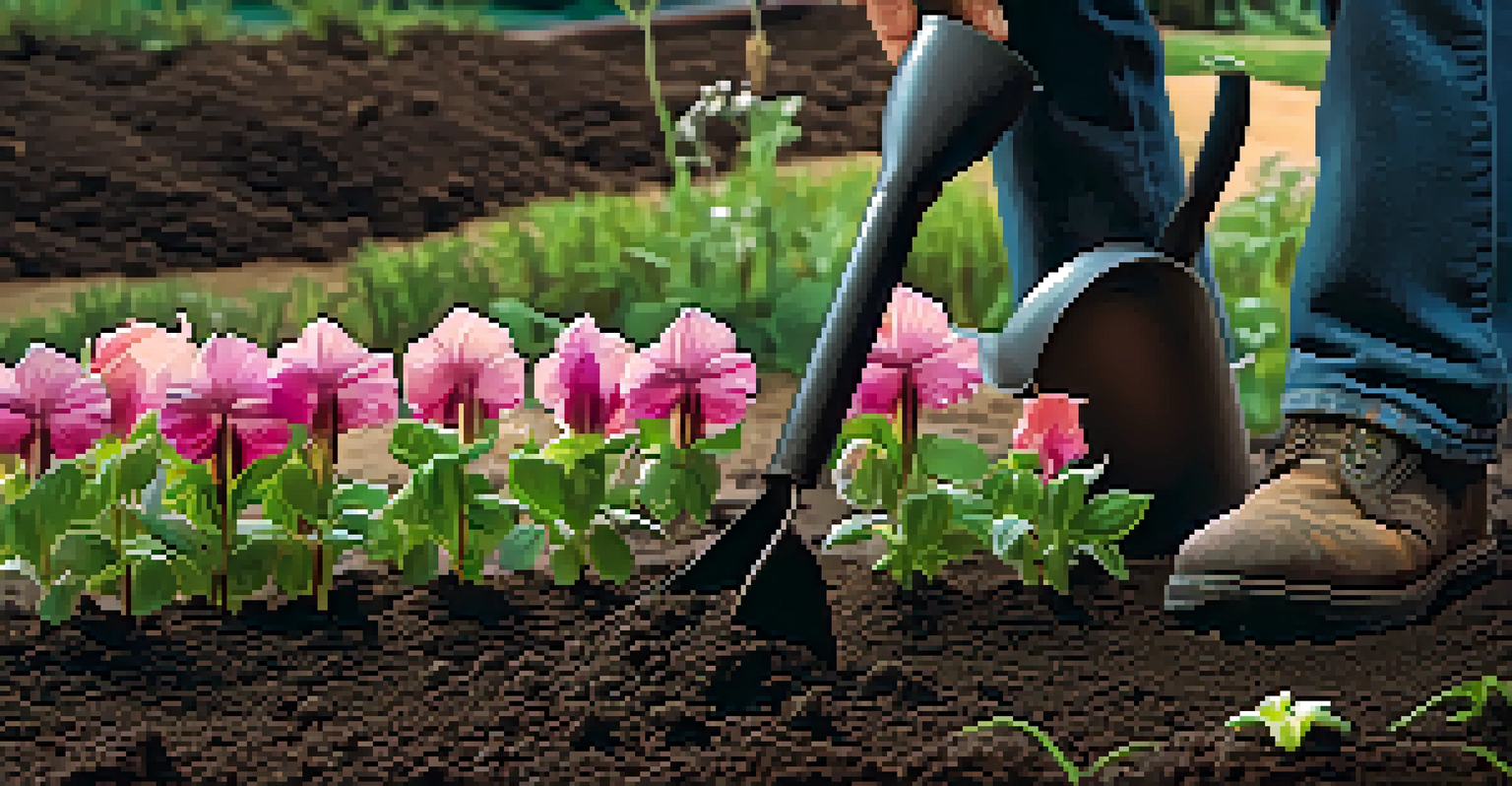Creating a Beautiful Flower Garden for Personal Enjoyment

Choosing the Right Location for Your Flower Garden
The first step in creating a stunning flower garden is selecting the right location. Look for areas that receive ample sunlight, as most flowers thrive in bright conditions. Consider your backyard's layout, including existing trees and structures that may cast shadows.
To plant a garden is to believe in tomorrow.
Additionally, think about accessibility. You want a spot that you can easily reach for maintenance tasks like watering and pruning. A garden that’s within view from your home can also bring joy and inspiration to your daily life.
Related Resource
Lastly, consider the drainage of the area. Flowers generally prefer well-drained soil, so avoid low spots where water can accumulate. Taking these factors into account will set you up for a flourishing garden.
Selecting the Perfect Flowers for Your Garden
Once you've found the right spot, it’s time to choose your flowers. Think about the colors and scents you enjoy, as these will influence your garden's atmosphere. Mixing different flower types can create a vibrant display that changes with the seasons.

Consider the climate in your region and select flowers that are well-suited for it. Local nurseries can provide guidance on native plants that will thrive in your area, making your garden not only beautiful but also sustainable.
Choose the Right Location
Select a sunny, accessible spot with good drainage to ensure your flower garden thrives.
Don’t forget to factor in the blooming seasons. By selecting flowers that bloom at different times, you can enjoy a colorful garden throughout the year. This planning will keep your garden lively and engaging, no matter the season.
Planning Your Flower Garden Layout
A well-thought-out layout is essential for a successful flower garden. Start by sketching a simple design on paper, keeping in mind the height and spread of each flower variety. Taller flowers should be placed at the back or center, while shorter ones can be positioned in front for maximum visibility.
Gardening adds years to your life and life to your years.
Consider using pathways or stepping stones to create a sense of structure, allowing easy access to all areas of your garden. These elements can also guide the eye and enhance the overall aesthetic of your flower display.
Related Resource
Remember to leave space between plants to ensure they have room to grow. This will prevent overcrowding and promote healthy blooms, making your garden a true showcase of nature's beauty.
Preparing the Soil for Planting Flowers
Soil preparation is a crucial step in establishing a thriving flower garden. Start by removing any weeds or debris from the chosen area, which can compete with your flowers for nutrients. This creates a clean slate for your garden.
Next, test the soil's pH and nutrient levels using a simple kit from your local garden center. Most flowers prefer a slightly acidic to neutral pH. Based on the test results, you may need to amend the soil with compost or other organic matter to improve its quality.
Plan Your Flower Layout
Design your garden layout thoughtfully by placing taller flowers at the back and ensuring adequate spacing for growth.
Finally, turn the soil to a depth of at least 12 inches to aerate it and encourage root growth. Healthy soil is the foundation for vibrant flowers, so take the time to prepare it properly.
Planting Your Flowers with Care
With your soil prepped, it’s time to plant your flowers! Start by digging holes that are slightly larger than the root ball of each plant. Be sure to gently loosen any tightly bound roots before placing them in the ground; this encourages healthy growth.
When planting, consider the recommended spacing for each flower variety, as overcrowding can hinder their development. Water each plant thoroughly after planting to help them settle into their new home.
Related Resource
As you plant, take a moment to admire your work and envision how your garden will look once the blooms flourish. This is your creative space, so feel free to customize it to your liking!
Watering and Maintaining Your Flower Garden
Regular maintenance is key to a successful flower garden. Water your plants consistently, especially during dry spells, but be careful not to overwater; soggy soil can lead to root rot. A general rule of thumb is to water deeply once or twice a week, depending on your climate and soil type.
In addition to watering, keep an eye out for pests and diseases that could harm your flowers. Early detection allows for effective treatment, whether through natural remedies or appropriate pesticides. Maintaining a healthy garden also involves deadheading spent blooms to encourage new growth.
Maintain Your Garden Regularly
Consistent watering, pest management, and fertilization are essential for a vibrant and healthy flower garden.
Finally, don't forget about fertilizing your flowers. A balanced, slow-release fertilizer can provide the nutrients your plants need to thrive, ensuring a vibrant and beautiful display throughout the growing season.
Enjoying the Fruits of Your Labor in Your Flower Garden
After all your hard work, it's time to sit back and enjoy your beautiful flower garden. Create inviting spaces with benches or chairs where you can relax and soak in the beauty of your surroundings. This will allow you to appreciate the fruits of your labor fully.
Consider incorporating elements like decorative pots, garden art, or even a small water feature to enhance the ambiance. These touches can make your garden feel even more inviting and personalized.

Finally, don’t forget to share your garden with friends and family. Invite them over for a cup of tea in your blooming oasis or share photos online. Celebrating your garden with others can amplify the joy it brings!